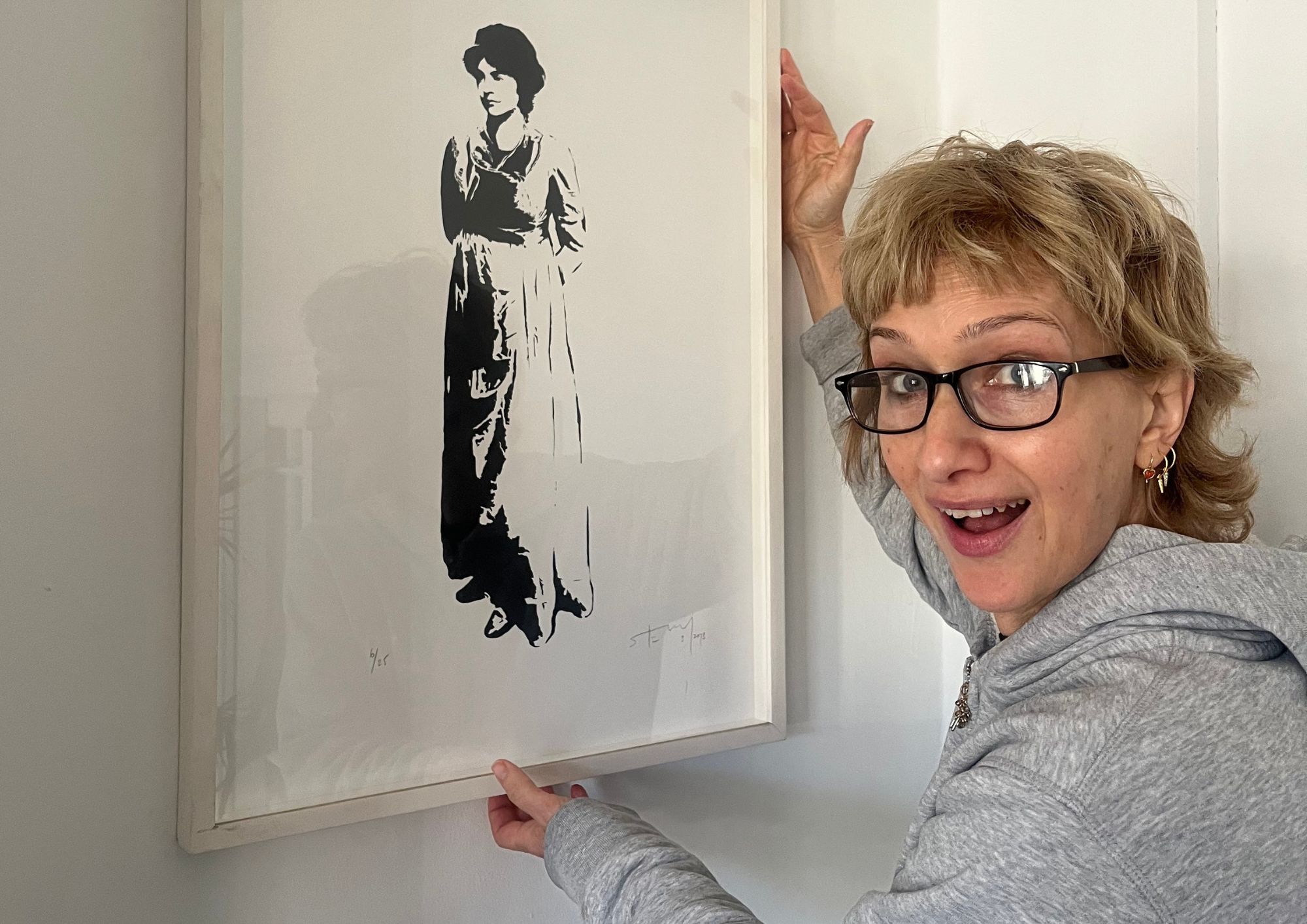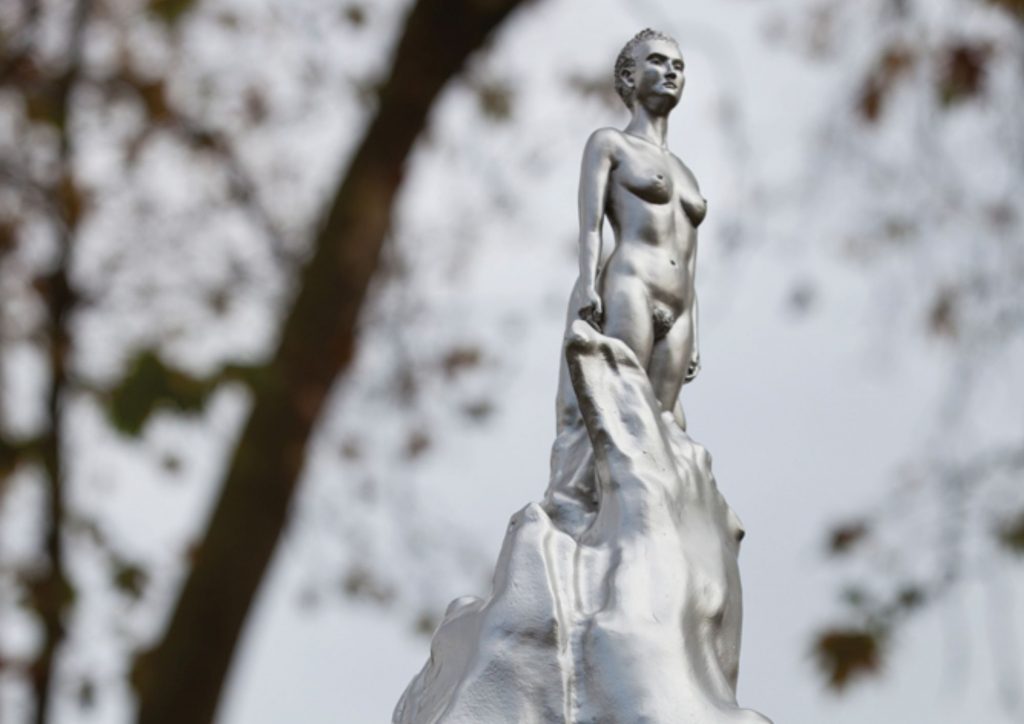What would Wollstonecraft have done with the hate from the trolls?
'Manosphere' and online abuse to be subject of lecture next month
Tuesday, 11th March — By Dan Carrier

Bee Rowlatt hangs a picture of the inspirational Mary Wollstonecraft
This article was published in our ‘Stop The Trolls’ special for International Women’s Day 2025
IT was a celebration of one of the greatest thinkers of the Enlightenment – but the people behind a piece of artwork marking the life of Mary Wollstonecraft faced a toxic online backlash.
Costing north of £130,000, the sculpture by Maggi Hambling was unveiled in November, 2020.
And unwittingly, it did much more than mark Wollstonecraft life and her times in Newington Green – it prompted a vicious online backlash about the style and form of the sculpture.
For Bee Rowlatt, who was the driving force behind the memorialisation of the trailblazing human rights advocate, it was an interesting maelstrom she found herself pushed into.
“The art was quite iconoclastic, but then again, so was Wollstonecraft. It was a fairly radical break from what people thought constituted ‘public art.” It was very different,” she recalls.
The day the art work was unveiled saw social media awash with opinions about its validity. Bee had to sit back and watch as voices were raised.
“On the day of it being unveiled, the response was a body blow but at the end of the day, we wanted everyone to know who Wollstonecraft was and what she stood for,” she says.
“People had a hissy fit and the internet came crashing down. We took an absolute beating online that week.
“I had to defend it day after day. The trolling was relentless. People objected to a naked figure, for example.”
While some of the comments were at best misguided and others just plain mean, Bee was able to see the positive side of being caught up in a media whirl.
“The thing was I managed to tell myself it did not matter, as long as people were responding to Wollstonecraft.
And if you don’t like it, so what?
“Thankfully it helped raise awareness and also brought support in for other statutes and other campaigns – for example, for a statue – figurative, this time – of Virginia Woolf. I went to Newington Green soon after and there were crowds there looking at it and discussing it.
“I did worry about it, and today people are still annoyed by it, but I have no beef with that at all.”
Bee, who chairs the Wollstonecraft Society, penned a book which saw her re-trace the writer’s steps as she set off on a quest to find a ship full of treasure.
“I have a long track record with Mary Wollstonecraft,” says the writer.
“I retraced the journey she made in 1795 from the streets of Paris during the French Revolution to Norway. She embarked on a journey to find some stolen treasure that her dodgy boyfriend had nicked.
“She set off with her baby and it just struck me as such an extraordinary thing to do so I decided to follow her journey and it became something of a full-blown obsession with her life and her courage.
“Her courage rings true for today. She lived in radical times and was a voice for the age. She went to France to learn, explore and influence the revolution.”

The statue in Newington Green was ‘misunderstood’
As social media and other digital spaces have become a poorly policed landscape full of toxic behaviour, Bee wonders what Wollstonecraft would have made of it.
“She would be raging at the state of social media,” she says. “She was advanced in her messaging. She really took to pamphlet writing and was a brilliant communicator. She used different mediums to communicate. She could adapt and use different styles.
“She also used letters, fiction and books for children. She was fascinated by education. She used all and every means she could to further her views.”
The Wollstonecraft Society, which Bee chairs, is hosting its annual lecture at the University of Westminster in April with Laura Bates, founder of the Everyday Sexism website, and broadcaster Gemma Cairney.
The topic is about the “Manosphere – and the rise of hostile environments online.”
“It’s about the toxic take-over of the internet and digital spaces,” adds Bee.
“These places were used for community building and sharing ideas but they have become just not safe for women.
“Women are 17 times more likely to be trolled online than men – but so many people have to use these spaces to share and promote ideas, work, campaigns. It is a vital question that needs to be considered: how do you use a space with such toxicity to promote human rights?”
Wollstonecraft would have engaged by using the power of her argument, she adds.
“Our emphasis with Wollstonecraft is her work, and at its heart is education,” says Bee.
“Even when she went into battle with those she fundamentally disagreed with, it was about educating them. That’s what she would be trying to do today.”
https://www.wollstonecraftsociety.org/news-1/ws-lecture-2025